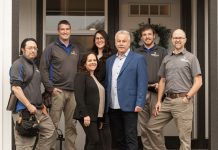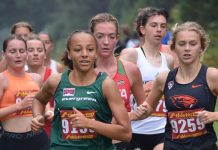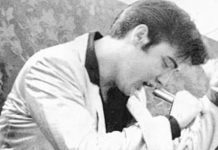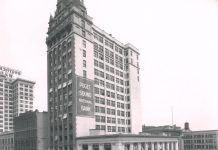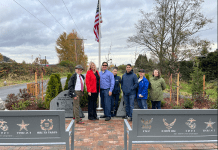Since the pre-season started for North Thurston High School football, Dr. Richard Lamour has been receiving videos. One player, a student who suffered a severe ankle fracture and dislocation last season, began sending short films of himself training. It’s his way of letting his surgeon know that he’s excited to get back to his team. “We cleared him recently to return to practice,” says Lamour, an orthopedic surgeon at Olympia Orthopaedic Associates (OOA). “He should be getting back to playing. I’m looking forward to seeing him do well.”
Lamour is just one of the OOA doctors who provide onsite medical support during high school football games throughout Thurston County. The group also offers services to The Evergreen State College, Saint Martin’s University, and South Puget Sound Community College (SPSCC). Because of its high injury rate, football is the only sport they typically attend, but high school athletic trainers refer athletes from other sports to them as well.
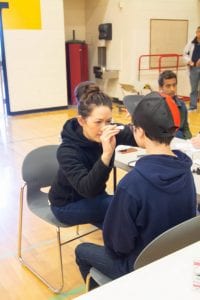
Football injuries range from bruises and sprains to fractures and dislocations, as well as concussions. “We assess any kind of musculoskeletal issues,” says Dr. Leila Borders, who works with the sports medicine staff at Tumwater High School. “Last year we had several shoulder dislocations.” Concussions are always a concern, she notes but there can also be problems with abdominal trauma, laryngeal trauma and eye trauma in addition to more common injuries.
Once the OOA doctor on site has done an initial assessment, usually in collaboration with the school’s athletic trainer, the next step may be returning the student to play, scheduling an appointment with a doctor, or in the worst-case scenarios, arranging a visit to the ER. The latter is generally a last resort, says Borders. “One of the biggest benefits of having us there is that if there’s an injury during a game, that student is getting medical treatment immediately. They’re not having to wait and go to an Urgent Care facility or the ER unless it’s absolutely necessary.”
Athletes from other
sports are frequently referred for ACL tears, Achilles tendon ruptures,
quadricep ruptures, ankle sprains and fractures. Dr. Tracy Hamblin is a
non-operative sport
medicine physician who
manages any fractures or other issues that don’t require surgery at Capital High School. “We see a lot of
repetitive motion injuries,” says Hamblin. “Basketball players in particular
tend to get patellar tendonitis.”

In recent years the OOA Sports Medicine Team has begun treating such cases with platelet-rich plasma (PRP), using the patient’s own blood to accelerate the healing process. “An example would be a baseball pitcher with an acute ligament tear in the elbow,” says Hamblin. “We inject the PRP into the tendon to induce more efficient and quicker healing, especially for ligament injuries. We still have a lot to learn about how the blood responds when we inject it, but it’s showing a lot of promise.”
Over time the doctors develop relationships with the coaches, staff and students at the schools they’re assigned. Borders has shared her cell phone number and personal email with the athletic trainer at Tumwater High School in case of emergency. “She can reach me at any time,” says Borders. “If she sees something during practice or at another game when I’m not there, she’s able to get in touch with me very quickly to get those athletes taken care of.”
Athletic trainers gain an added level of assurance knowing there’s an extra set of highly trained eyes on campus, Hamblin contends. “I think they feel a little more comfortable having someone there who can manage the more acute, serious injuries,” she says. “They love having a physician that they can communicate with directly.”

In severe situations, doctors like Hamblin provide a sense of calm and direction for not only the injured student, but also parents and even athletic training staff. She recalls an incident with a member of the opposing football team last year during a Capital High School home game. “It was a pretty serious injury,” says Hamblin. “The other team’s athletic trainer came out and she was kind of nervous. I stabilized the fracture and directed her in what to do from that point forward. She came up to me later and was very appreciative.”
Hamblin could see right away that the injury would require surgery, and she was able to explain to the student and his parents what was occurring and what would happen next. “I knew who the surgeon was going to be, so I was able to guide the parents through the process,” she says. “It seemed to make everybody a lot more comfortable in a very scary situation.”
Lamour points out that even some colleges and universities don’t provide the level of medical support that is available at high schools throughout the county. “It’s a win for everybody,” he says. “I enjoy it because I like football and it’s fun to be around the sport while providing a service that I’m passionate about.”
Learn more at the Olympia Orthopaedic Associates website or by calling 360-709-6230.
Sponsored

